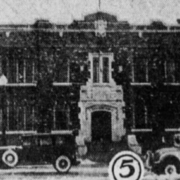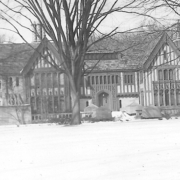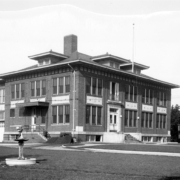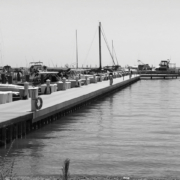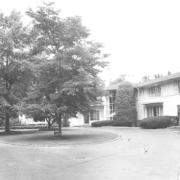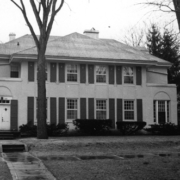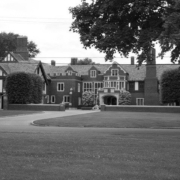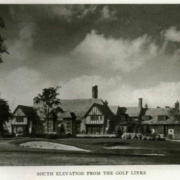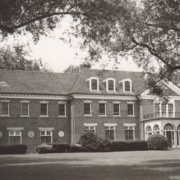Historical Architecture of Grosse Pointe – Neighborhood Club
Last week we presented the story of Cottage Hospital which officially opened November 6, 1928. Located at 159 Kercheval, it was designed by the noted Boston firm of Stevens & Lee, to create a “modern institution in every way.” The original Cottage Hospital was located on Oak Street (now Muir Road) and opened in 1919. This week we cover the history of the Neighborhood Club. We briefly mentioned the organization last week when we explained its involvement in the health care of residents of Grosse Pointe Township during the 1918 Spanish influenza epidemic. However, the origins of the club date to 1911, when a group of women met to “talk things over”, to establish an organization that would meet the recreational, educational, and social service needs of families in the area. It was originally called the “Mutual Aid Association Neighborhood Club”, and its first officers elected were – Miss Hendrie, president, Mrs. Frederick M. Alger, vice president; Mrs. Clara Meddaugh, secretary; and Mrs. Ingersol Lewis, treasurer. Source: Detroit Free Press (January 1930). The board of trustees also included some of the most prominent women of the Grosse Pointe community during this era. Image courtesy of: Detroit Free Press (January 1930).

The original headquarters for the Neighborhood Club was in a building on Rivard. The club then acquired a small cottage, 60 Oak Street (now Muir Road) “as a result of a property gift from Mrs. Hugh Dillman, Mrs. Horace Dodge, and a member of the board.” Source: Detroit Free Press (January 1930). During this period the club broadened its scope of work, expanded its services, and provided Grosse Pointe’s first gymnasium. In 1915, the club helped establish the first public library in Grosse Pointe, along with the communities first hospital in 1917. Also at this time, the Neighborhood Club was responsible for coordinating home visits, school checkups, and administering vaccinations. During the flu epidemic of 1918, the organization set up temporary beds in its gymnasium, and when the beds were full provided transportation for patients to Harper or Henry Ford hospitals. So, when Cottage Hospital was established, in 1919, the hospital became the main resource for tending to the medical needs of the community, thus relieving some of the pressure on the Neighborhood Club to provide healthcare services. The Neighborhood Club after all, at this point, was financing itself, courtesy of bequests and gifts from benefactors and well-wishers, sales, and entertainments, as well as sponsored programs. Image courtesy of www.neighborhoodclub.net.

During the 1920’s the Neighborhood Club helped to construct the new Cottage Hospital on a parcel of land that was offered by Henry Burns, located at 159 Kercheval, where the hospital stands today. It was reported in the Grosse Pointe Civic News (February 1928) the new Cottage Hospital of Grosse Pointe was made possible “by bequests of friends of the hospital and generous donations during 1926 and 1927.” Image courtesy of: Wayne State University Digital Collection (1928).
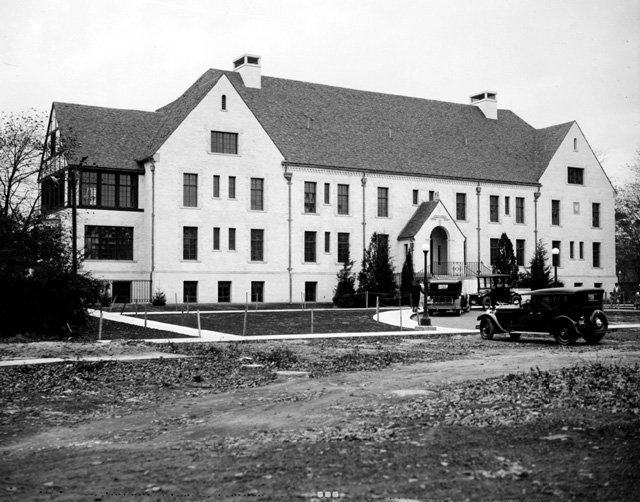
The 1920’s was a busy period of growth for the Neighborhood Club. In March 1926, a branch library was established at the organization’s location on Oak Street by the Wayne County Library Association. It was decided “the branch would carry a well selected number-of-books-for general reading, make provisions for furnishing books (not in the branch) to any person requesting them, and deliver books to a patron’s home, when not available at the branch.” The library was certainly well received, it is reported 50 library cards were issued on the opening day. Source: Grosse Pointe Civic News (March 1926).
It was also around this period that Dexter M. Ferry, Jr. a member of the prominent Ferry family who owned the Ferry-Morse Seed Company, donated an eight-acre site on Waterloo Avenue between St. Clair and Neff to the Neighborhood Club. After raising $150,000 (around $2.6m today) during a successful fundraising drive, the organization commissioned a new community center and gymnasium to be built on the land donated by Mr. Ferry (at 17145 Waterloo Avenue), across the street from where the present club building stands today. The new community center opened in 1929. It was reported, at the time, to be among the finest social centers of the country, having been designed by noted Detroit architect George W. Graves and built by the H. G. Christman Company.
Graves, born in Buffalo, New York in 1876, was by no means a prolific architect in Grosse Pointe, which makes his project for the Neighborhood Club even more special. In Grosse Pointe, during the early twentieth century Graves designed several residences:
- 330 Lincoln (1911)
- 24 Beverly Road (1914)
- 17000 East Jefferson (1914 – demolished in the late 1970’s)
- 300 Lincoln (1915)
- 333 Lincoln (1918)
- 1040 Bishop (1922)
- 56 Roslyn (1928)
The H. G. Christman Company was founded in 1894, by H.G. Christman in South Bend, Indiana. The Christman Company opened an office in Lansing office in 1915.
It is reported the new two-story community center was a fireproof building, 11,500 sq ft in size. It was constructed of red brick and Indiana Limestone. An article in the Detroit Free Press (January 5, 1930) explains how “it combined an imposing front and graceful outline with the utmost in recreation and utilitarian advantages. A gymnasium, 60 by 90 feet, was a pivotal point in its attractions. The facility also contained a billiard room, library, social rooms for clubs, offices for the visiting nurse and visiting bookkeeper, a meeting room for the Boy Scouts, and a fully equipped kitchen, with a large adjoining room that could be used as a banquet hall or converted into a playroom or classroom. The auditorium on the second floor had a seating capacity for 300. In the land that surrounded the building was six tennis courts, two baseball diamonds, a large playground, a small one for the younger children, and a football field.” Source and images are courtesy of: Detroit Free Press (January 1930).
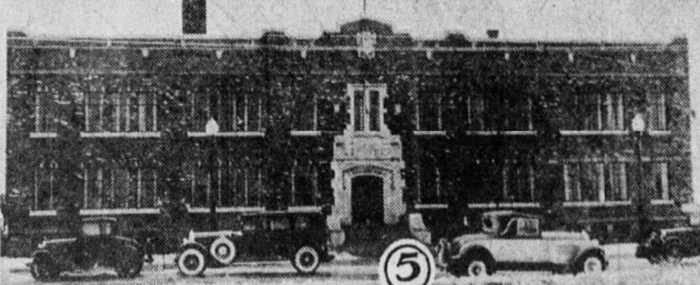


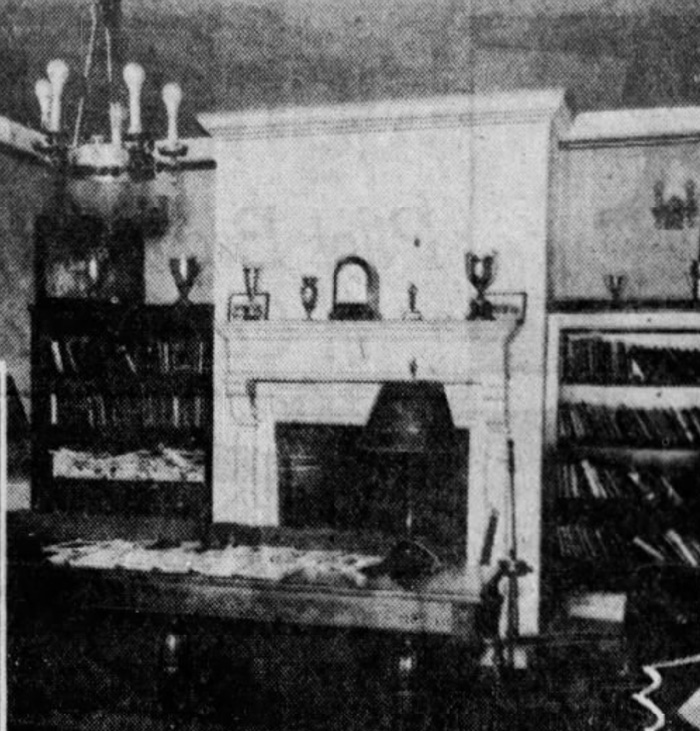
The article in the Detroit Free Press also reported, the club had a membership of 1,000, split into as many as 30 groups such as the Camp Fire Girls, Boy Scouts, Gardeners’ Club, and a Chauffer’s Club, until there was scarcely a line of recreation of social betterment that it did not touch. The organization had become a key feature in the field of family life. It was suggested the organization helped as many as 600 and 700 families and individuals in a single year. The schedule of events included pre-school age classes, businessmen’s gym class, handicraft, basketball, boxing for men, chauffers’ gym class, artwork, music lessons, gardeners’ club, displays, and flower shows. The children received membership cards and paid 25 cents annually.
Over the proceeding years the Neighborhood Club continued to expand and became an integral part of everyday life in Grosse Pointe. The recreation program in particular was incredibly popular. Based on information on www.neighborhoodclub.net, developments include:
1930’s
- During the depression, the Neighborhood Club was the public welfare center for the area. The club helped many families during the hard times.
- The Detroit Lions used the club football field for practice.
1940’s
- During World War II the club once again responded to the changing needs of the community.
1950’s
- The Club had established a strong recreation center and its gym was used by high schools for their basketball and football programs, while the athletic fields were used every available minute.
1960’s
- In 1963, the Neighborhood Clubs community center, designed by George W. Graves, and in operation since 1929 was closed on June 17. In 1965, The Helen Newberry Joy Fund purchased the Neighborhood Club property and gave it to the Grosse Pointe Board of Education.
- In 1966, the original community center was deemed unsafe and demolished.
- While the Neighborhood Club was in between buildings, the organization used schools, churches, and the War Memorial for its activity sites. Then, in 1968, a new community center was commissioned across the street from the original site. The club used funds from the sale of the original building plus $50,000 in donations to build a new 13,500 square-foot center at 17150 Waterloo in 1968. Image courtesy of: www.neighborhoodclub.net.
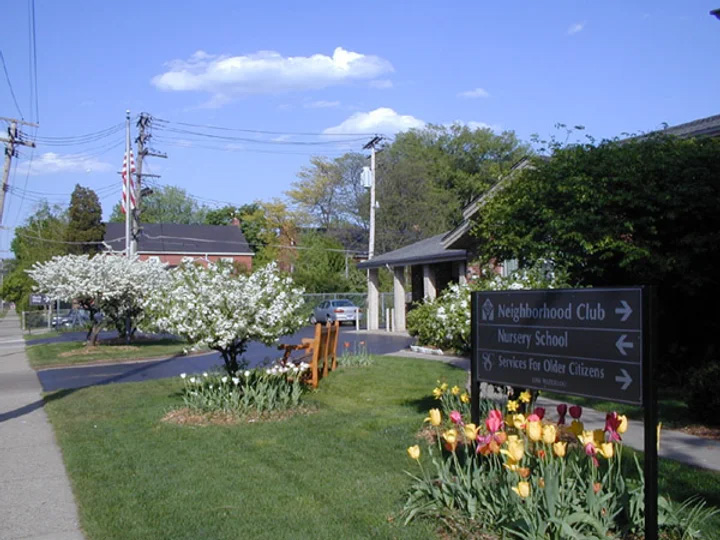
2010’s
In September 2011, the community center, completed in 1968, was demolished. Sixteen months later, on January 7, 2013, a new facility was opened. This completed the $4 million construction campaign to create the building that still exists today. Today, the club’s tennis courts are located where the original building once stood. Image courtesy of: www.neighborhoodclub.net.
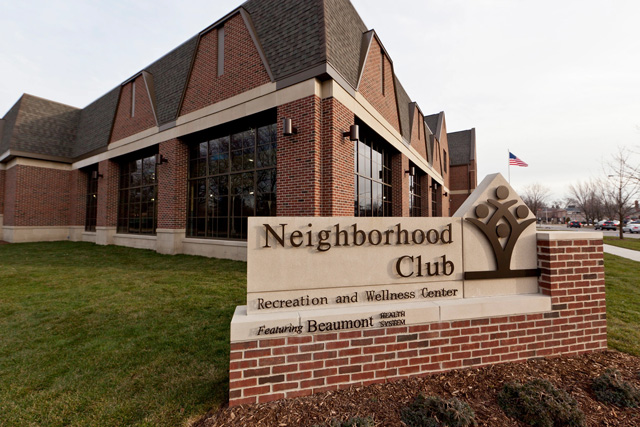
Without the strong will and dedication by the group of ladies who formed the Neighborhood Club in 1911, it is fair to say the community would be a lesser place without it. Their original goal to create an organization to meet the recreational, educational, and social service needs of families in the area has certainly been met and continues to be fulfilled.
*Photos courtesy of the Higbie Maxon Agney archives unless stated.
** Research, information, and data sources are deemed reliable, but accuracy cannot be fully guaranteed.
Written by Katie Doelle
Copyright © 2023 Katie Doelle

